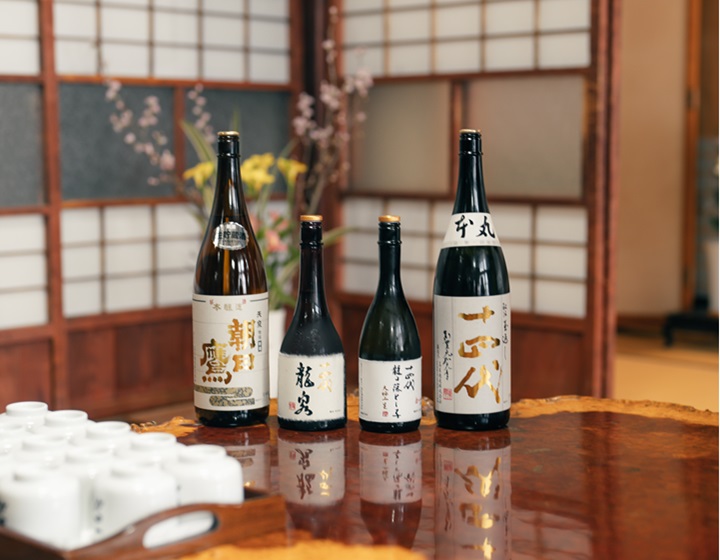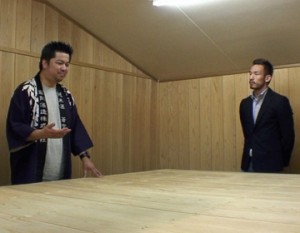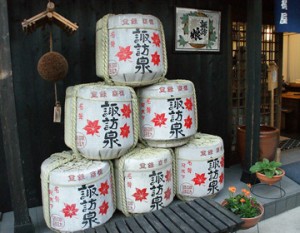Murayama City, Yamagata Prefecture. Takagi Sake Brewery has been brewing sake for more than 400 years in a region with heavy snowfall. Mr. Tatsugoro Takagi is the 15th head of the brewery. Although he bears the famous “Jyushiyo” sign, he continues to challenge the future, mixing technical innovations with the traditions that have been spun from generation to generation.
Long-established sake brewery with over 400 years of history
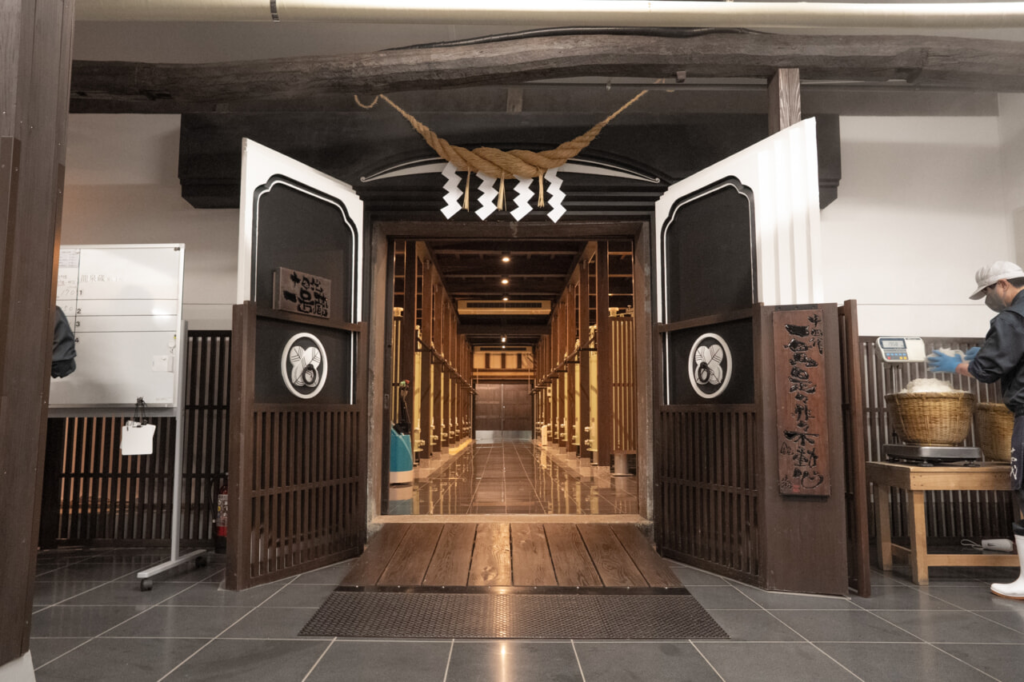
Murayama City is located in the center of Yamagata Prefecture. Blessed with abundant and clear melted snow water due to the heavy snowfall, the Takagi Sake Brewery has been brewing sake for generations since 1615, in the early Edo period. The Takagi Shuzo is famous for its brand name “Jyushidai,” which has made a name for itself not only in Japan but also overseas. Even those who do not enjoy sake must have heard of it at least once. Without “Jyushidai,” it would be impossible to talk about the Takagi Brewery.
The head brewer of the Takagi Brewery is Akitsuna Takagi, who took the name “Tatsugorou,” which has been used by the head of the Takagi family for generations, in April 2023 after the death of his father in 2022.
Making sake by “hearing voices and seeing images”.
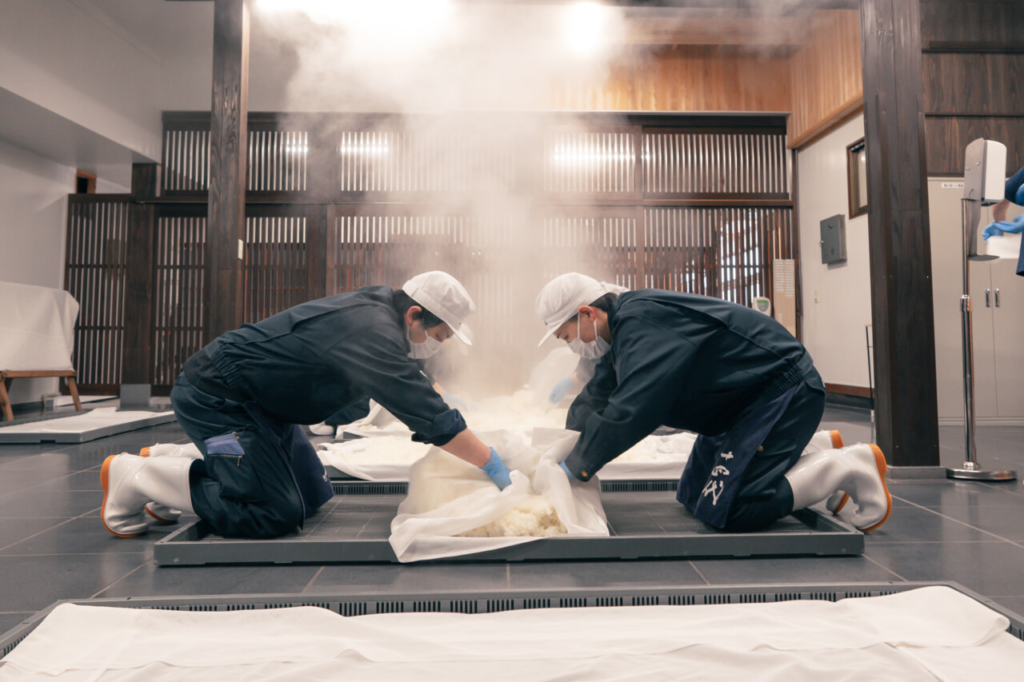
The best time of year for sake brewing is said to be from December to February, when the weather is extremely cold. Sake is extremely delicate and susceptible to temperature changes. Without proper temperature control, sake will deteriorate, and this is true not only during distribution and sales, but also during the production process. According to Mr. Takagi, the temperature should be roughly 0 degrees Celsius, and the indoor temperature should be about 6 degrees Celsius. If the air is not cool enough, the inside of the rice will not be cooled properly, leading to the growth of bacteria. Of course, it is possible to cool the air to 6 degrees Celsius in the summer, but there is a difference between the natural cold and the air conditioned air. It is surprising that sake brewed in winter tastes completely different from sake brewed between May and September, even when the sake is the same. For this reason, Takagi Sake Brewery concentrates on making its most important sake during the coldest months of January and February.
However, winters in the area where Takagi Brewery is located are extremely harsh: the lowest temperature from December to February is well below zero degrees Celsius, and in January and February, there is as much as two meters of snow. Murayama is an area of heavy snowfall. The winters are harsh, but the area is blessed with an abundance of melted snow, making it a wonderful place to make sake. The Takagi family’s ancestors may have started making sake here after realizing how wonderful the water here is.
It takes about 45 days from the time the rice is washed and steamed to the time the sake is made. During this time, the sake goes through a variety of processes, and Mr. Takagi is consistently concerned about “how to improve the environment for the bacteria. The microorganisms that brew sake have neither voice nor form. However, if you are in contact with them on a daily basis, you can hear the sounds and smells of their daily fermentation, and you can see what they are saying on the surface of the unrefined sake. This is the company motto of the Takagi Sake Brewery: “Hear what is not audible and see what is not visible.
Mr. Takagi, who maximizes the power of invisible microorganisms to create unrivaled sake, has had many twists and turns on the way to where he is today.
How the fantastic sake “Jyushidai” was born

In addition to the sake brewing area, the Takagi Sake Brewery’s grounds also include the Takagi family’s main house, the family home where Mr. Takagi was born and raised. In the past, the roles of the brewery were divided into three: the head of the family was the head of the brewery, the brewer was the brewer, and the toji (master brewer) was the toji. Mr. Takagi imagines, “The brewery master would sit in his living room and watch the entire brewing process. In fact, about 30 years ago, the brewery employed a toji (master brewer), but he retired due to old age. However, that person retired due to old age. This was one of the reasons Mr. Takagi returned to his parents’ home.
I was the eldest son of a sake brewer, so I knew I would one day take over the family business, but I thought I would be in charge of the brewery’s management. I never thought I would end up making sake myself,” he says of his feelings at the time. With an eye on his future, he moved to Tokyo when he was in high school and studied brewing at Tokyo University of Agriculture. However, he was not aiming to become a toji (master brewer). When it came time to find a job, he decided to study distribution in order to manage the brewery, and found a job at Isetan Queen’s Chef in Shinjuku. While he was learning firsthand about the distribution process as a sake sales representative, he received a phone call from his father, who said, “The toji has retired. The message was, “The master brewer is retiring. I am a member of the prefectural assembly, so I can’t see what is going on at the brewery. What are you going to do? He did not ask me to come back or take over the company. He just said, ‘What are you going to do? He was 25 years old.
My love for sake overcame my desire to stay in Tokyo.
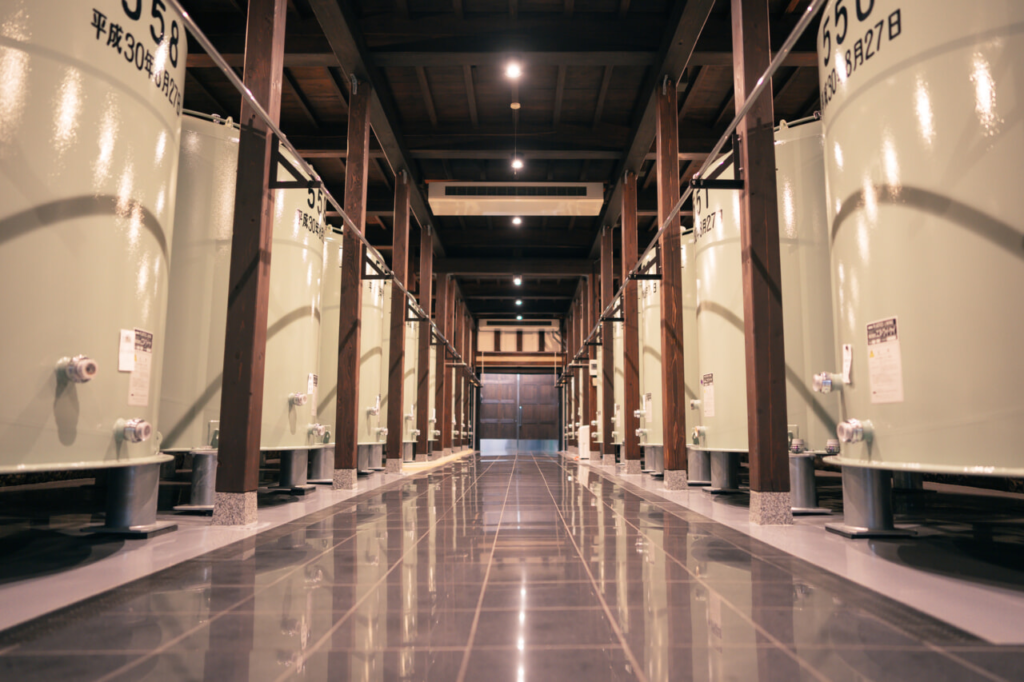
At the time, the mainstream was clear, light, dry sake, but I always felt that there was something different from the sake aroma I had grown accustomed to smelling at home since I was a child. Then, at a store in Sangenjaya, Tokyo, I came across a certain sake. It was a mellow, umami, raw sake made from Yamadanishiki, a type of sake from Fukushima Prefecture. Takagi says, “I felt in my skin that it was similar to a smell I used to smell all the time when I was a child. It was the moment when his desire to make this kind of sake for the world to drink overcame his desire to stay in Tokyo.
Upon returning to his hometown, Mr. Takagi found the brewery in a difficult situation. The local people were engaged in an intensifying price war for sake. His father, who loved his hometown, was hesitant to sell products that were not in his own interest. Under these circumstances and with debts to pay, the brewery decided to make a fresh start.
Only one “Jyushiyo” passed the patent name deliberation.
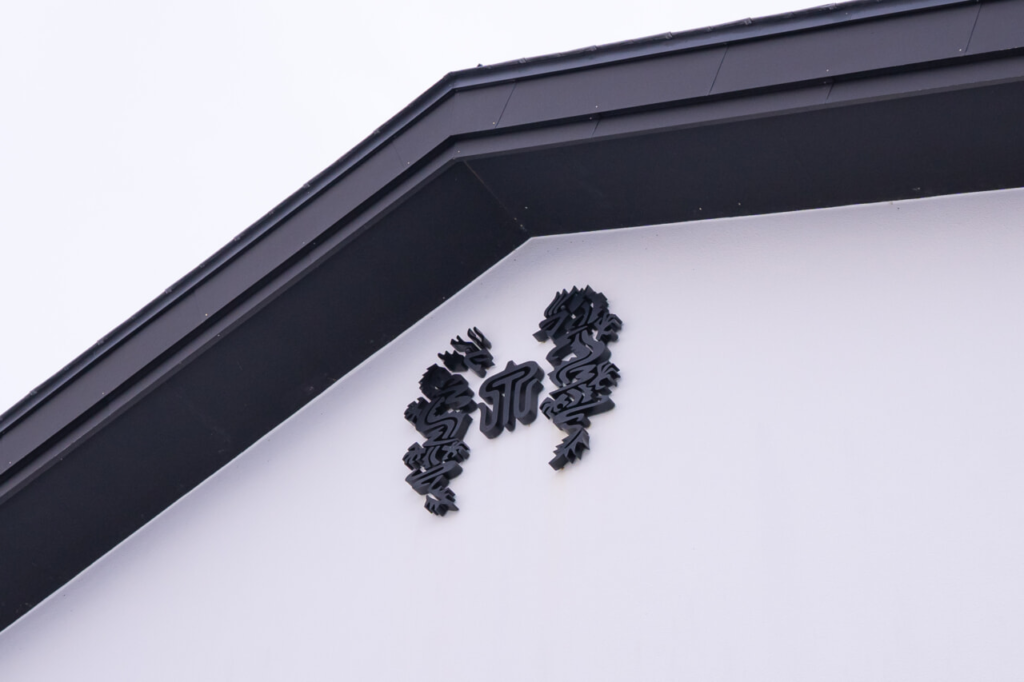
The birth of the name “Jyushidai” was a result of what can in a sense be called coincidence or fate. Originally, Takagi Shuzo’s sake was known locally as “Asahi Taka. However, Mr. Takagi’s grandfather (Tatsugoro XIII), who wanted to put a trademark different from Asahi Taka, visited the Patent Office with the names “Jyuuniyo,” “Jyuusai,” “Jyuusai 14yo,” and “Jyuusai”. However, approval was strict at the time, and the numbers were rejected because they were used by everyone. The only name that mysteriously passed the examination was “14yo,” perhaps because the examiner read it as “toyoshiro,” rather than a number.
It is neither 13 nor 15, but rather “14,” a name that strangely enough, easily entered my mind. When he consulted his father, who had preceded him in the family, about the name for all the sake he would make, he was told to go ahead and use the name. Looking back, I think I was given a wonderful trademark,” says Mr. Takagi.
Making sake for the first time, rooted to the point of collapse.
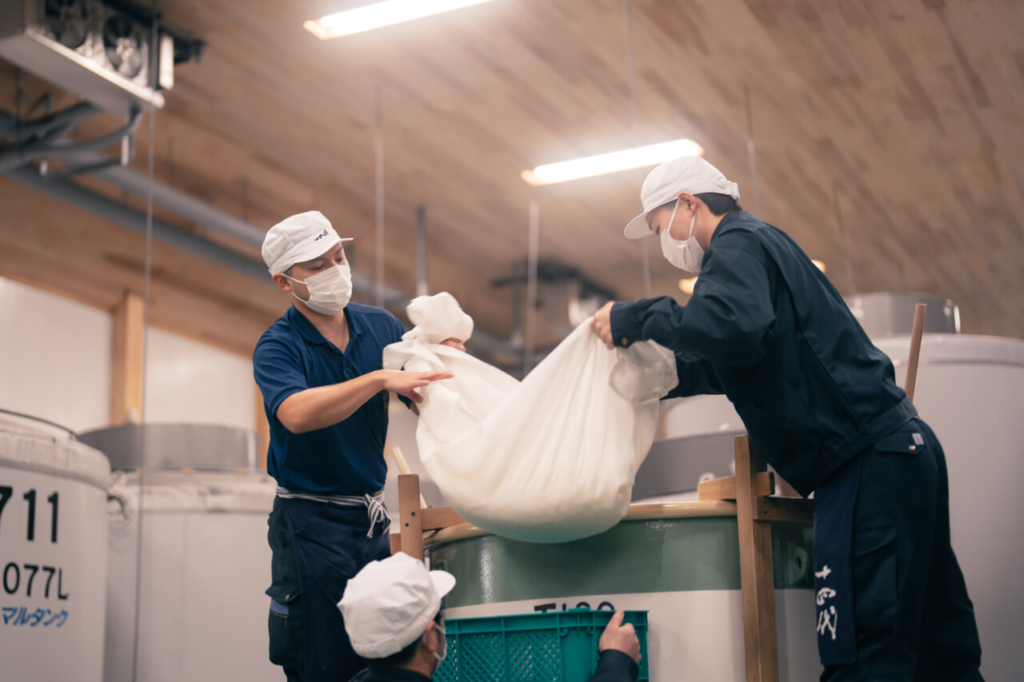
The first thing Mr. Takagi decided to do when he started making sake was to express the deliciousness of rice. Rice is sweet to eat and has volume. He wanted to express this in sake as well. The goal was to create a sake that was clean, dry, and different from the mainstream sake of the time, but with a delicious taste like the sake I encountered at Sangenjaya. Mr. Takagi’s ideal sake brewing process began with the brewers, who he has known since childhood and are now elderly. However, the harshness of the work was beyond his imagination. His body screamed from the pressure of unaccustomed physical labor, limited sleeping time, and no possibility of starting over. He became ill in the middle of the project and was hospitalized for about a week after completion. However, the sake he made with the advice of his mentor at the university was close to the flavor he had envisioned, even in his first year of making sake. The sake he made with the advice of his mentor at the university was very close to the taste he had envisioned, even in its first year of production. It is a sake with a voluptuous, fruity flavor that is different from the light, dry style.
The finished sake needed to be sold. Mr. Takagi went to the chairman of Suzuden, a sake store in Yotsuya that had helped him when he was working in Tokyo. When he tasted the sake, the chairman said, “You did well, Mr. Takagi. This is neither dry nor sweet, but delicious. It is the best sake. I will sell it. This was the beginning of Jyushodai’s rapid success.
Making sake for the next generation
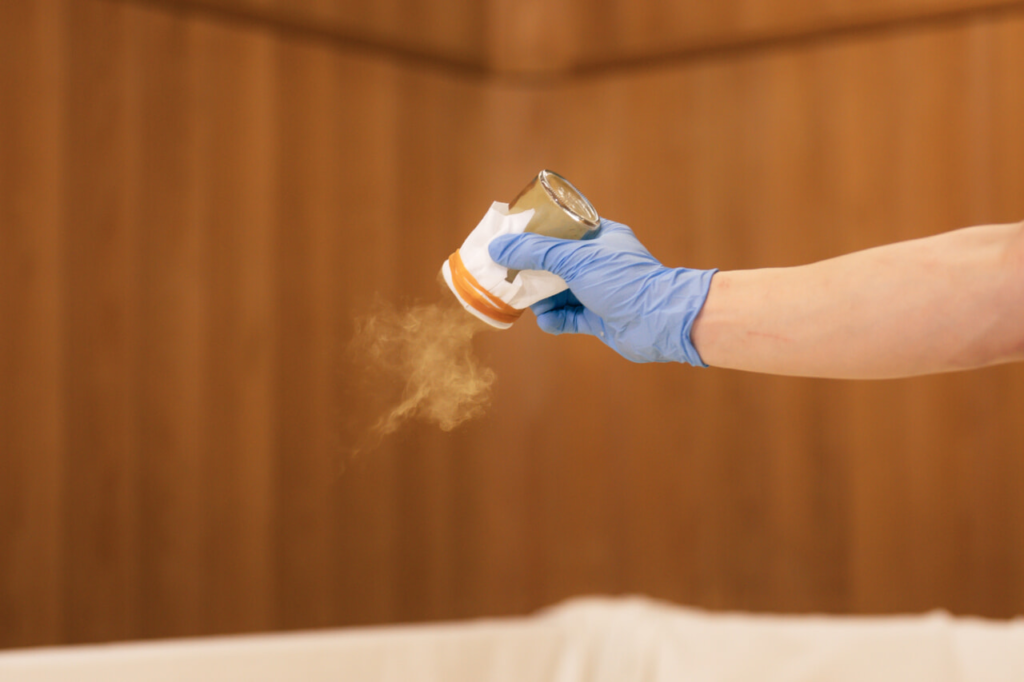
Takagi Brewery has indeed made a name for itself throughout Japan with its “Jyushiyo,” but this was not accomplished overnight. While preserving the tradition, the company has made improvements to its facilities and passed them on to the next generation. I think both my ancestors and my father had good times and bad times, but I think they had a great desire to pass the business on to the next generation,” he said. This is also the way Takagi Sake Brewery makes its sake, he says.
In fact, while the Takagi Brewery spares no expense in investing in equipment, it retains the traditional method of making sake using human hands. This is because they feel that the more time and effort spent, the better the sake tastes. Take koji making, for example. In a koji room, steamed rice is sprinkled with koji mold and koji is made over a period of about 50 hours, and human hands are also involved in this process. In addition to sprinkling the koji, the stacked koji covers are manually stacked every few hours to keep the temperature at a constant level. The boxes contain rice that has been sprinkled with koji mold, and the way the koji covers protect the outside of the boxes shows the long history of the brewery. According to Mr. Takagi, this was the basis of the original sake brewing process. It is said that well-made koji smells like chestnuts, but koji made carefully by hand with a well-used koji lid has a stronger chestnut aroma. This is because the koji is grown by hand. Although it is possible to eliminate this part of the process, the company dares to keep it because they want their employees to experience the difference in the method of making koji and the aroma of koji. It is truly a traditional aroma that cannot be experienced through mechanization.
In-house rice developed through extensive research to young brewers throughout Japan

There is something else to look out for at Takagi Sake Brewery. The company has developed its own three varieties of sake rice. They are called “Ryu no Otoko,” “Hashu Homare,” and “Sake Mirai,” respectively. Sake rice for sake brewing is much more scarce than rice for food, and in the past it was brought from Hyogo and other areas. However, in order to make better tasting sake in a cold region, Mr. Takagi’s father started to develop his own rice.
However, as it is said that “it takes 10 years to improve a rice variety,” it was naturally difficult to develop their own rice, but with the cooperation of farmers and the creation of test fields, Mr. Takagi managed to succeed in his generation. In the beginning, it was also difficult to make sake from the rice, and it took several years to determine what koji and yeast should be used.
One of the fruits of their efforts is “Sake Mirai”. They do not use this sake rice by themselves, but give it to young brewers all over the country to help them make sake. This is a fitting use of the name “Sake Mirai,” which was given by Mr. Takagi’s father with the hope that the sake industry would become a bright and shining example of what is to come.
The pride of Tatsugoro Takagi XV
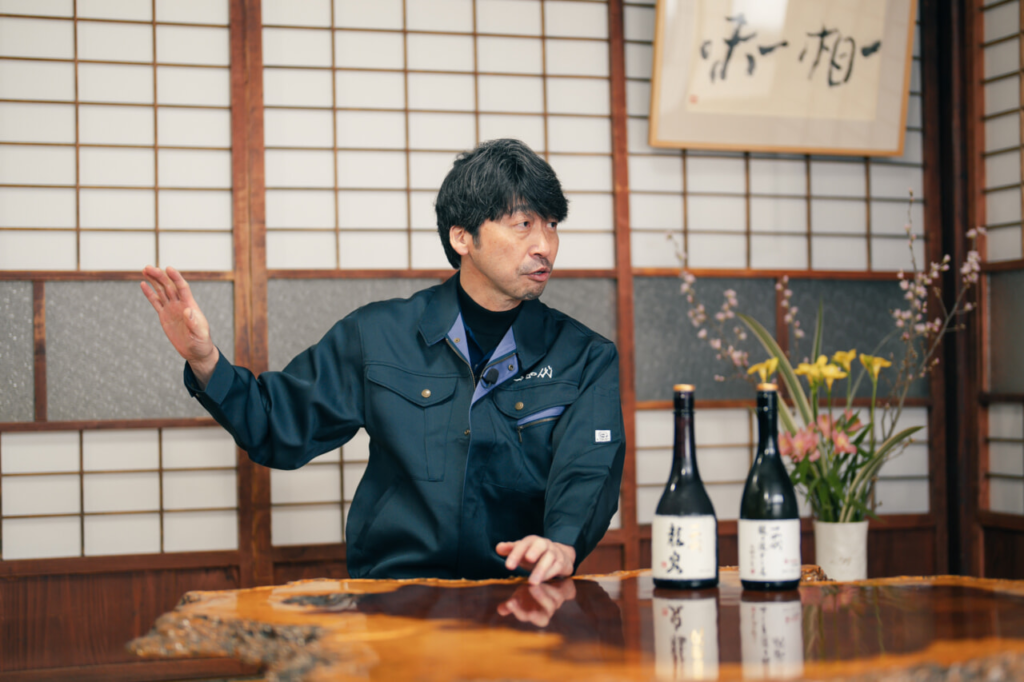
When Mr. Takagi returned to his parents’ home, there were fewer than 10 brewers. Today, Takagi Sake Brewery has 31 employees, including 16 in production, and many of the brewery workers are young people from the area. The reason why there are so many locals is because they are accustomed to the harsh natural environment of Murayama. It is difficult to continue brewing unless one is willing to master the craft in this environment. This is because sake brewing is a steady process. While rice conditions vary every year, we must constantly produce products that consumers find delicious. If the taste is not what we want, we make improvements one step at a time. This is a repetitive process. Because I love sake so much, I approach sake brewing as if I were a first-year student every year,” says Takagi.
The brand name “Jyushidai,” which has gained a reputation for its delicious taste, now commands a premium price that makes it impossible to buy. Mr. Takagi, of course, is aware of this. From a business standpoint, it would seem that the popularity of the brand would lead to an increase in supply, but Mr. Takagi has no intention of shifting to mass production. He is proud to say that he only wants to produce sake of a quality that he is satisfied with and that will make the people who drink it happy.
Now that I have assumed the name Tatsugoro Takagi XV, I have to think not only about the development of the company, but also about the development of the community,” says Takagi. The taste of sake is also changing, and today’s sake is more drinkable and matches well with food. The alcohol content is also lower than in the past. We must always be diligent in our research, create sake that meets the needs of drinkers and distribute it to people not only in Japan but also around the world. He hopes to continue producing sake that will one day make people in other countries think, “Let’s go to Japan, let’s go to Yamagata” when they drink Takagi Sake.
Takagi Sake Brewery has been making sake in Murayama since the early Edo period. The brewery, which continues to take on new challenges while preserving tradition, is sure to continue to produce bottles that will shock drinkers and the sake industry. Let’s taste a clear drop of sake created by the nature of Murayama and the skill of the fifteenth generation.
No brewery tours, tastings, or sales are available.



